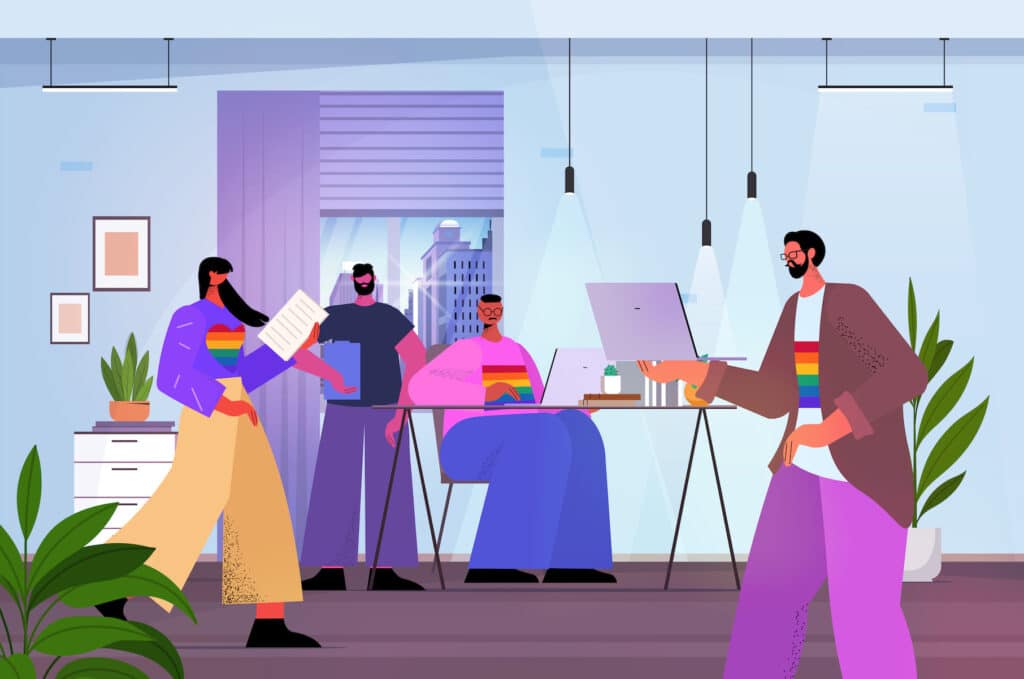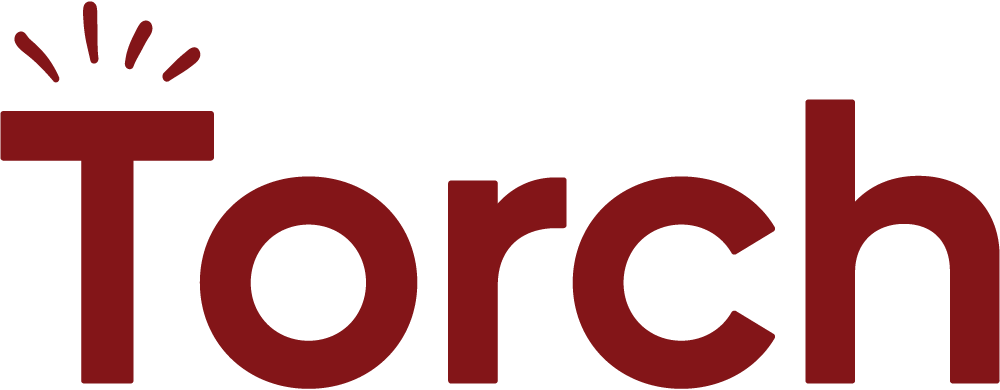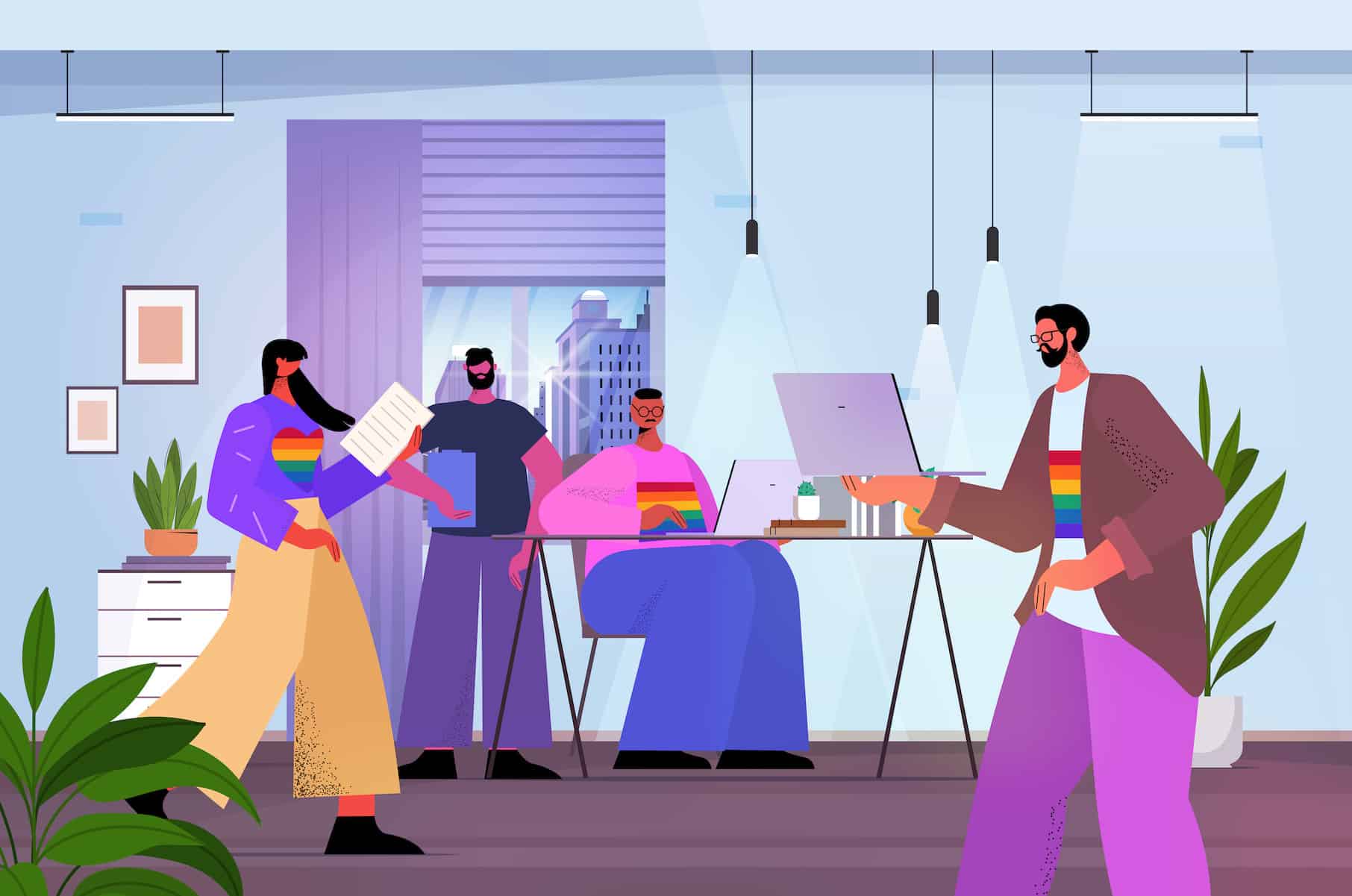 The feeling started when Vanessa Tennyson was five-years-old. That was when Tennyson first knew something was different.
The feeling started when Vanessa Tennyson was five-years-old. That was when Tennyson first knew something was different.
The feeling grew and grew until Tennyson, who was assigned male at birth, became interested in wearing women’s clothing. As a teenager, Tennyson remembers scanning the Sears catalog, imagining what it would be like to wear the dresses pictured on the glossy pages. But “I knew if I got caught it would be bad,” says Tennyson, who today identifies as a transgender woman. “So I suppressed it, got married, and had kids.” The feeling didn’t go away.
Then, around 2012, Tennyson read a story that changed her life. It was about a closeted transgender woman who requested in her will that she be buried as a woman because it would be the only time she’d get to be her true self.
“That hit me like a ton of bricks,” Tennyson told me. At the time, Tennyson was running her own firm, and still suppressing what she knew was her real identity. So she found a therapist, started taking hormones, and never looked back. As she began to transition, Tennyson’s firm bought her out, which she suspected was “because they were uncomfortable with who I was.” The buy-out propelled Tennyson into another transition: figuring out what she would do next. She spent six months “sitting in a lot of rage” about her circumstances, until she had a revelation that illuminated the path forward.
“I was getting caught up in whether people accepted or rejected me – but the only thing I could control is me,” she told me. “All I can do is show up as my best self, my authentic self.”
Today, helping members of the LGBTQIA+ community get comfortable with expressing who they are – and letting go of their desire to please or placate others – is a focus for her as an executive coach. It’s something many of the other queer-identifying executive coaches I spoke to said they work on with their clients. And it’s a focus that not only has benefits for the individuals they work with, but for their organizations, too.
For instance, research suggests that belonging is the top driver of employee engagement. Whether or not you feel like you can be yourself, and be accepted for who you are, is a big part of whether or not you feel like you belong. Employee engagement, in turn, is linked to increased revenue, productivity, and performance.
Tennyson has also done research connecting employees’ comfort in being themselves at work with business outcomes. Her research, published in 2021, found men who were out of the closet were 30% more engaged and productive than those who were closeted. “This makes sense when you think of all the energy required to manage who you are when you show up to work, and in particular how many audiences you are trying to manage that identity with,” she says.
Why Choosing To Share Your Identity is Harder Than Ever
Many members of the LGBTQIA + community are faced with the question of how much of their identities they want to bring into the workplace. But in today’s legislative environment, where states across the country are passing or considering bills to target LGBTQIA+ rights, and the Human Rights Campaign recently declared a state of emergency for the community, this question is harder than ever to answer. According to research from Indeed, more than one in four LGBTQIA+ employees aren’t comfortable being out at work, and the majority believe they may have been discriminated against because of their identity – getting passed over for promotion (60%) or being targeted for a performance improvement plan (57%). Thirty-eight percent of trans-identifying employees feel they need to hide their identity at work. 65% are worried about new legislation, and how it could impact their lives and work.
“It’s a huge challenge coaching around these issues right now,” says Brandy Simula, an executive coach who also identifies as queer. “Folks are feeling significantly under attack, sometimes working for employers who are scaling back their resourcing of LGBTQ benefits. They’re wondering: is it more dangerous to be out? Do I need to go in the closet to get a job, because of what we’re seeing happening with layoffs? There’s a lot of pain and grief happening for folks in the workplace right now, different from what I’ve seen in the last 10 years.”
Unlike individuals with other underrepresented identities that are clearly visible (such as different racial groups), members of this community can, at least superficially, have a choice as to how visible they want to make their identity to the outside world. And yet, if they sense that being ‘out’ about who they truly are will set them up for discrimination or harassment, it’s not a real choice.
How, then, to reckon with this reality? How does someone decide whether or not it’s safe to be who they are, or who they want to show up as in the first place?
How Coaching Can Help LGBTQIA+-Identifying Employees
For executive coach Steve Disselhorst, one of the first steps is encouraging his queer-identifying clients to get curious about “which part of their identity is holding them back” at work. “For example, for a gay man that was previously bullied by men, being in a board meeting or a leadership meeting could be a trigger. So it’s about helping them identify – what part of this story do you want to hold onto? What do you want to let go of? Who do you want to become? This is the story of what happened to you in the past. But is it true in this board room?”
Tennyson uses other questions to challenge her clients’ beliefs about why they may be hiding parts of their identity: why do you care what other people think? Why is it important to you? Can you really do anything about it? The act of coming out, or being your true self, is one of “validation and not affirmation,” she reminds them. By being your true self, you’re validating yourself, not seeking affirmation from others.
One of the biggest lessons Simula has taken away is “how common it is for people to have an invisible identity.” In addition to identifying as queer, Simula also has an invisible disability. But here, she makes an important caveat: “Just because someone has an identity doesn’t mean it’s necessarily core to who they are, and that they want to show up that way at work.”
If it is something they want to make more visible, it’s important for them to sift through both conceptual and practical considerations. Conceptual questions Simula might walk her clients through include: Who am I? What really matters to me? How do I want to show up? Who do I want my employer to see or know me as? On the practical side, they might talk through whether someone will include that they volunteered for an LGBTQIA+ organization on their LinkedIn or resume, or what experiences they might talk about in interviews.
Simula also coaches leaders and managers who want to be allies to the community. Her guidance to them is three-fold:
-
- Recognize that the LGBTQIA+ community isn’t a monolith. “Don’t assume that if you have a lesbian employee, you know what an intersex employee needs.”
- Look at your learning journey as a growth opportunity. Especially in the diversity, equity, inclusion and belonging space, she says, “people are so afraid to make mistakes that they choose silence or inaction.” She encourages them to show up anyway and say, “I’m new to this space, I want to be supportive, and I’m learning.”
- Name the identities you, and your organization, support. “When you hold an invisible identity, whether it’s a queer or another kind of invisible identity, it can be hard to feel like you belong if your organization is not explicit about including and naming those identities,” she says. “For queer folks and people with disabilities, because those identities can be invisible, it can be even easier to erase them and people who belong to those communities.”
Empowered Employees Drive Organizations Forward
The other side of that, of course, is what happens when communities are not erased. When individuals from previously unrecognized communities are given an opportunity to not only better understand who they are, but to show up, undivided, at work. Tennyson’s research asks us to consider “behavioral authenticity as a driver of corporate guidance and governance.”
In other words, as a member of the LGBTQIA+ community who can be honest about who she is at work, she then “has the privilege and difficulty of sitting in a space and saying, ‘why are we doing this?’” She can challenge the decisions her workplace is making because she is secure in who she is, and what matters to her. “Now,” she says. “I get to change the paradigm.”

